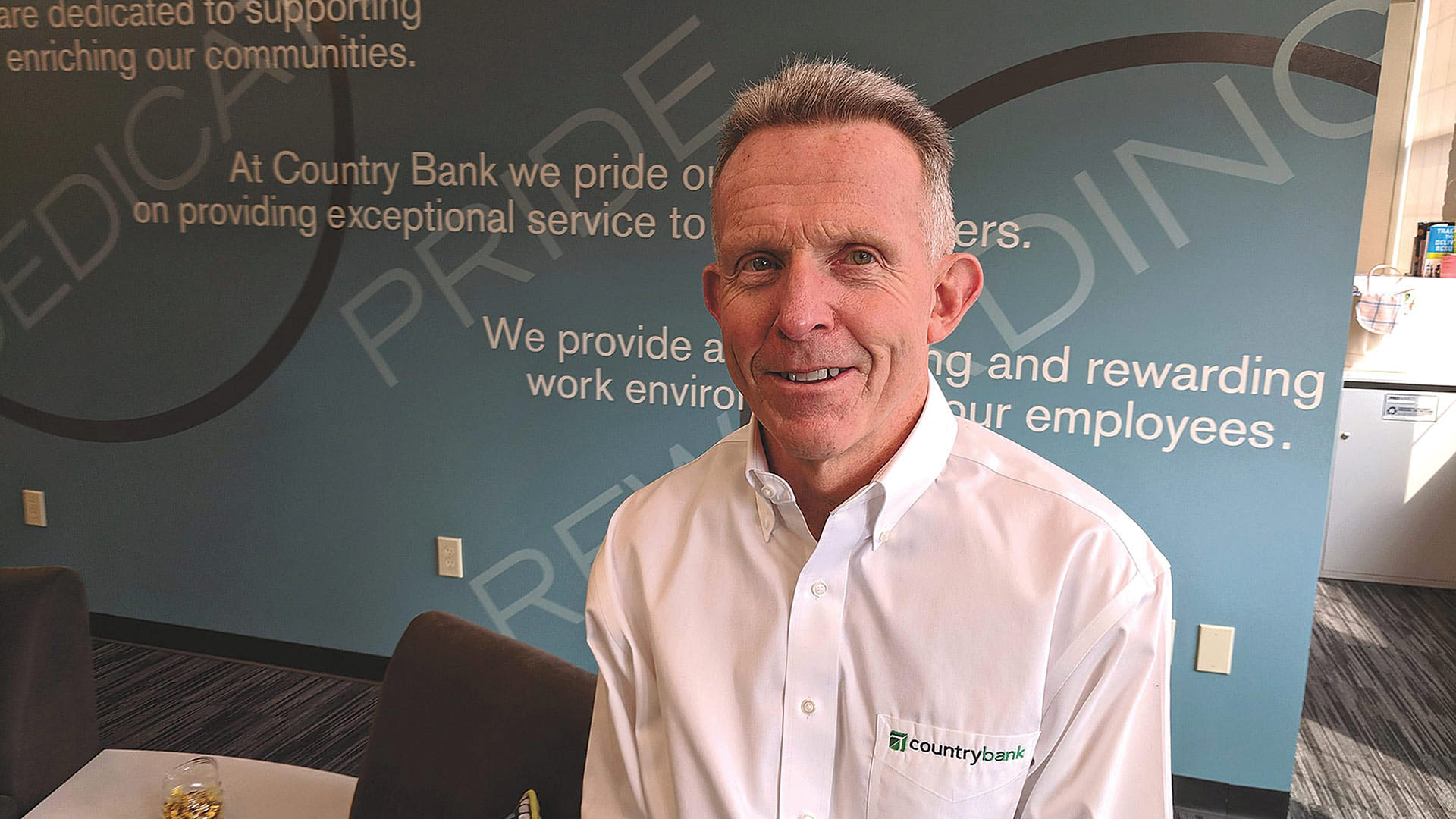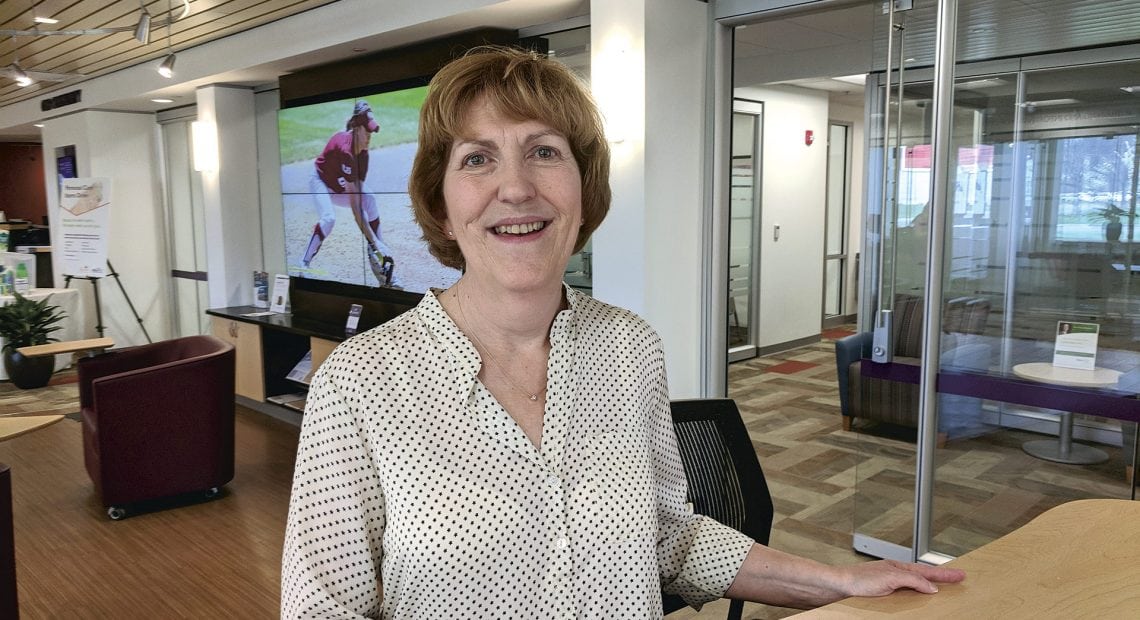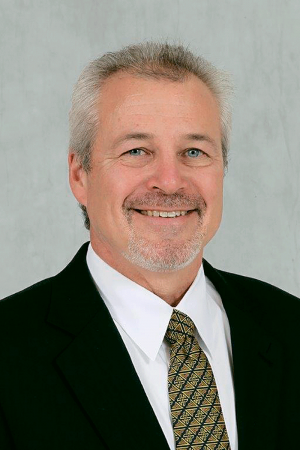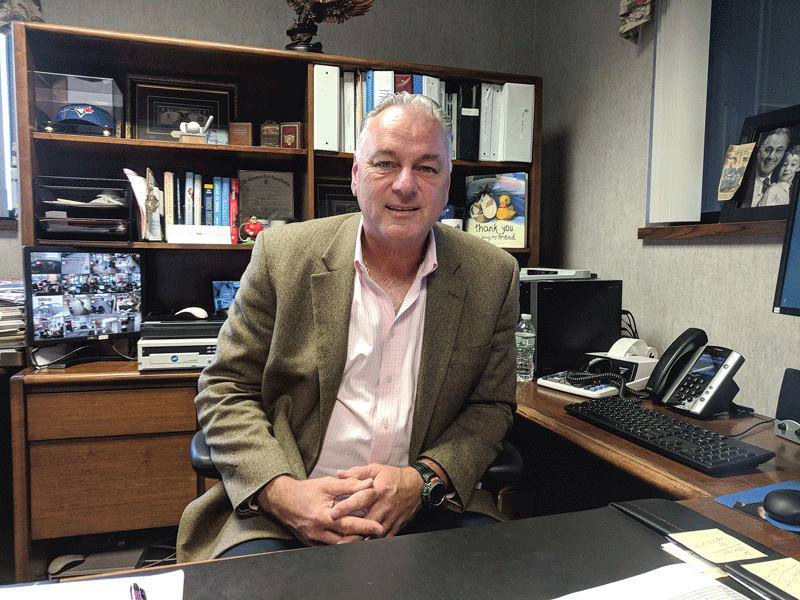Points of Interest

Rich Kump, president and CEO of UMassFive Federal Credit Union.
Richard Kump says he’s disappointed by — but quite philosophical about — recent statistics showing that credit unions are not faring as well as they have historically when it comes to customer satisfaction.
“For just about our entire existence, credit unions have always outperformed banks, particularly the big banks, but just a few years ago, credit unions dipped in our satisfaction rating compared to particularly the national and multi-regional banks,” he said, adding that there’s an obvious reason why.
“It used to be that satisfaction was coming into the branch, being met with a smiling face that was empathetic and there to help — that in-face, smiling employee,” he explained. “Now, satisfaction is defined a little differently; it’s defined by speed: ‘how quickly can I accomplish this?’ The Bank of Americas, the Wells Fargos … their ease of use has surpassed that of credit unions and small community banks.”
Getting up to speed — figuratively but also quite literally — is one of the broad strategic objectives identified by Kump, president and CEO of UMassFive College Federal Credit Union, and other members of the leadership team at this 55-year-old institution.
Others include everything from territorial expansion — Springfield and Westfield are among the areas at or near the top of a list of potential landing spots — to continued growth of an already dynamic niche in lending for solar-energy installations; from the building of a new and more highly visible branch in Hadley and consolidation of other facilities into the headquarters building in that town to the possible creation of an insurance agency to be operated by the credit union.
“Most of our members have Amazon — with one click, you can purchase something. And that’s what they expect from us, being able to accomplish whatever their need is quickly and without friction.”
In a wide-ranging interview, Kump, a 20-year veteran at UMassFive who took the helm in 2019, touched on these and many other points. Overall, he said the institution, which now boasts more than $625 million in assets, is in what he called a controlled growth mode, anxious to take advantage of opportunities that have arisen in recent years, including ongoing consolidation in the banking industry, advancing digital technology, and changing needs among customers — on both the consumer and commercial sides of the ledger.
Such opportunities enabled UMassFive to essentially triple the projected profits for what was expected to be a lackluster 2022, he explained, and these same forces, in addition to those aforementioned goals for expansion, are providing reasons for optimism as the calendar turns to 2023.
Developing a Game Plan
Kump, who grew up in New York, has been a lifelong, and extremely avid, Yankees fan.
The wall across from the desk in his office tells the story.
There, one will find a framed picture of Bucky Dent’s famous (infamous to Red Sox fans) home run in that one-game playoff back in 1978. It’s signed by both Dent and the Red Sox pitcher who threw the pitch, Mike Torrez, and Kump notes with regret that the signatures are fading.
As is the autograph of Don Larsen on a framed photo from his historic perfect game in the 1956 World Series against the Brooklyn Dodgers that sits just below the Dent picture. There’s other Yankee memorabilia on his wall, including a group of perhaps the four greatest players from that franchise — Babe Ruth, Lou Gehrig, Joe DiMaggio, and Mickey Mantle.
While the Yankees have always been a passion for Kump, or a “great failing,” as he called it, credit unions have essentially been his career. Prior to arriving at UMassFive, he worked at St. Mary’s Bank in Manchester, N.H. — founded in 1909, before such institutions were called credit unions — and, later, Cathedral Credit Union in Manchester.

UMassFive has developed a strong niche in the financing of solar-installation projects.
With that background, he’s well-versed in what credit unions have been historically, and what has long differentiated them from banks, especially the larger ones — a high-touch operating philosophy and a strong focus on customer service.
These days, though, Kump is more focused on what credit unions can be — and must be — to continue to thrive and grow in a changing financial-services landscape.
And here, as noted, speed is an important part of the equation.
“While overall satisfaction with any local institution is high, this is a world of digital transformation and how quickly you can get your organization to deliver what the consumer is expecting,” he explained. “Most of our members have Amazon — with one click, you can purchase something. And that’s what they expect from us, being able to accomplish whatever their need is quickly and without friction.
“And that has been our focus on improving the member relationship,” he went on, adding that UMassFive is responding with online appointments, online loan applications that are simpler and what he described as ‘frictionless,’ the ability to join the credit union digitally — “that’s our primary branch; that’s how we serve” — fraud-prevention efforts, and other measures.
“We want to make the processes as simple and easy as they can be because that’s what the consumer is demanding today,” he explained, adding that this mindset will be applied to every aspect of the business, from credit cards to those loan applications.
And while improving its speed and ability to serve customers in the manner they are now demanding, UMassFive is moving forward aggressively on a number of other fronts, said Kump, including territorial expansion, new branches, and better, more effective use of its facilities.
Several of these goals are coming together in the planned move of the flagship branch inside the headquarters building off Route 9 in Hadley to a new building to be constructed just down the road at the border between Hadley and Amherst on the site of an auto-parts store.
The move will give UMassFive much greater visibility, said Kump — the current headquarters building is a few hundred yards from the street and behind other buildings — and it will also enable the credit union to consolidate spaces and ultimately save money.
“Branches are now less a transaction center and more of an advisory center. The things people want to come in for are lending — we do a ton digitally, but for loans, people still like to come in, especially on the commercial side — as well as investments and wealth management. Those are things people like to do in person.”
Elaborating, he noted that the credit union outgrew its headquarters building, which opened in 2001, several years ago, and has been leasing additional space in Hadley for its operations center, an expensive undertaking that ultimately led to the development of plans to build a new and much larger headquarters.
By moving the flagship branch to another location on Route 9, the credit union can now scrap those plans in favor of a far-less-expensive option: a new branch building. He added quickly that this new plan wouldn’t be possible if not the arrival of remote work forced by the pandemic.
“What we learned during COVID is that we don’t need to have everyone on-site,” he explained. “Other than our retail staff, we probably have 80% of employees on some type of telecommuting status, either hybrid or fully remote. With that, coupled with the move of our flagship branch and opening up that space, we’ll be able to bring the employees from our operations center over here and not have to lease space. And we’ll have the staff on site all under one roof and not have to worry about building a new headquarters building.”
Branching Out
Beyond Hadley, UMassFive is looking to add some new branches in the coming years and expand its footprint across this region, said Kump, adding that the leadership team has identified several different potential target areas.
At the top of the list is Springfield. UMassFive has one location in the city, in the rehabilitation facility at Mercy Medical Center, a branch that counts both medical-center employees and area residents as members. To attract more members, additional sites are being eyed, he said, adding that the Sixteen Acres neighborhood is a preferred landing spot.
Meanwhile, credit-union leaders are also taking a hard look at Westfield, a large community that boasts a state university and thus resembles, to some extent, the Five College area that UMassFive has long called home.
“Many of the demographics are similar to who we serve best,” he said of the Whip City and the surrounding area. “So that is a logical place for us to go.”
While expansion and additional branches are in the business plan, UMassFive will look for measured, controlled growth, Kump said. “At $625 million in assets, we’re not at a size where we can put up a branch every year. Break-evens on branches seem to be running seven or eight years now, so we need to careful with our expansion.”
Meanwhile, any new branches will be smaller in size than what has been built historically, simply because fewer customers come to such facilities and technology, such as ITMs, has changed how service is provided, and thus they require smaller staffs, said Kump, adding that the nature of the business conducted inside is changing as well.
“Branches are now less a transaction center and more of an advisory center,” he explained. “The things people want to come in for are lending — we do a ton digitally, but for loans, people still like to come in, especially on the commercial side — as well as investments and wealth management. Those are things people like to do in person.”
Another strategic objective at UMassFive is growing the commercial side of the ledger, said Kump, adding that, over the past decade or so, the credit union has built what he called a “commercial infrastructure” of products and services. With that infrastructure now in place, the credit union will work to build its portfolio of clients, he said, adding that there are new products planned as well, as well as a commercial credit card.
“For the first 50 years of our existence, it was consumers only — individuals and their families,” he told BusinessWest. “And what we found is that some of those consumers also own businesses, and in the past, we had to turn that business away. A number of years ago, we committed to the local business community, and we want to grow that side of the business.”
One segment of the commercial market that UMassFive is dominating — basically because few other institutions have considered it worthy — is solar energy.
Indeed, since 2017, the credit union has written more than $100 million in loans for residential solar projects, said Kump, adding that it has partnered with the Clean Energy Center to connect low-income households with solar air-source heat pumps.
“It’s a huge niche, and it’s mostly ignored by other financial institutions — when it comes to the true residential solar loan, I know of just one other institution in Western Mass. that offers it,” Kump explained, adding that the biggest reason why is that such offerings amount to unsecured loans, and few banks and credit unions have an appetite for such lending.
UMassFive has the expertise — its chief commercial officer is certified in commercial solar lending — and a track record of success in this realm that it’s looking to build upon.
“We find that they perform as well as equity loans,” he said, adding that, while the market for such loans has softened recently because the tax credits for such installations have diminished, their eligibility requirements have expanded to include nonprofit institutions such as churches, as well as municipalities.
“We were an early adopter, we understand the industry, we know how it works, we support that industry, and it’s a big piece of who we are,” he said, adding that the clean-energy portfolio extends beyond solar and into energy-efficiency projects, both residential and commercial, such as those administered by Mass Save.
Bottom Line
As he surveys the banking and financial-services landscape, Kump sees plenty of challenges ahead — from projections of a further slowing of the economy to rising interest rates in the housing market and growing competition for customers in this sector.
But he also sees opportunities for institutions that have the ability to adapt and respond to changing customer needs in a proactive, forward-thinking manner.
That has been the MO at UMassFive for more than a half-century now, and it is the pattern that will continue into the future.
George O’Brien can be reached at [email protected]



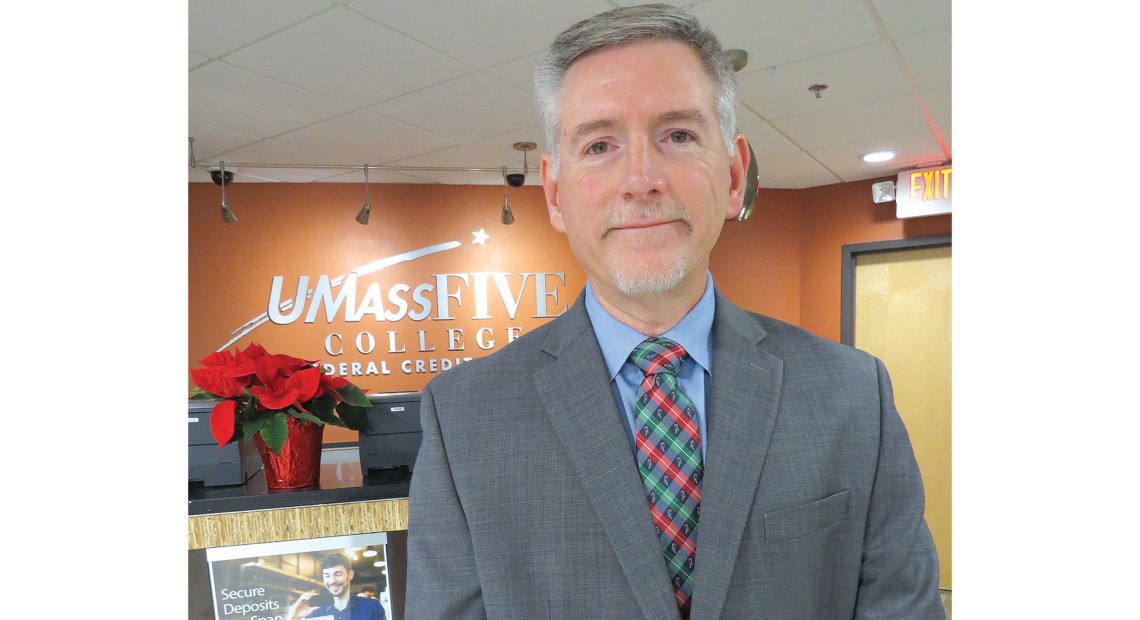
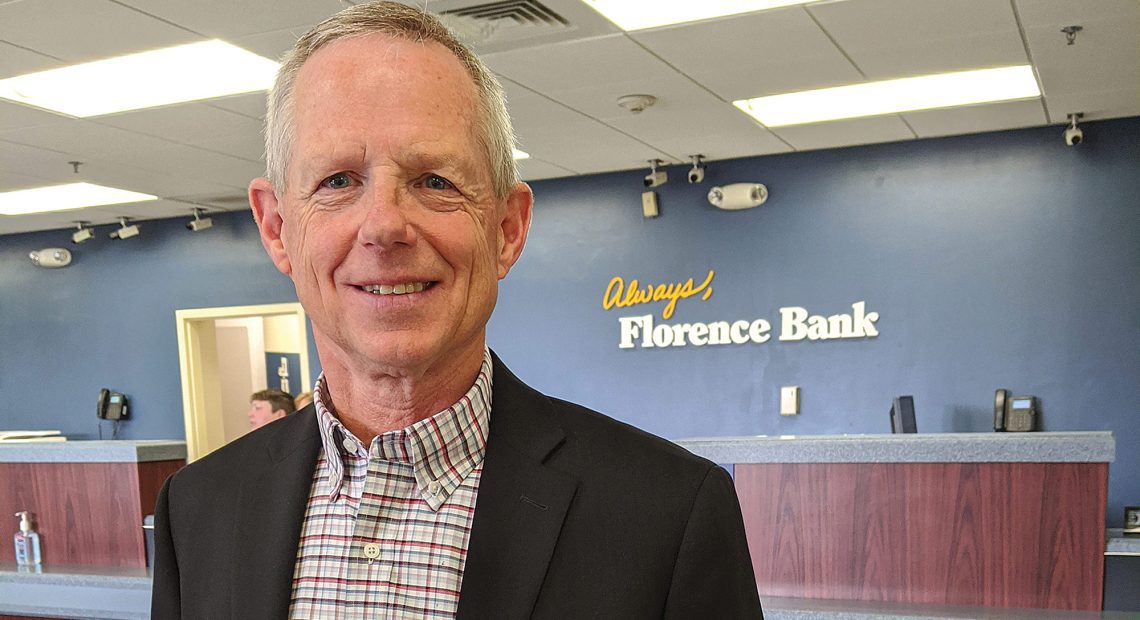
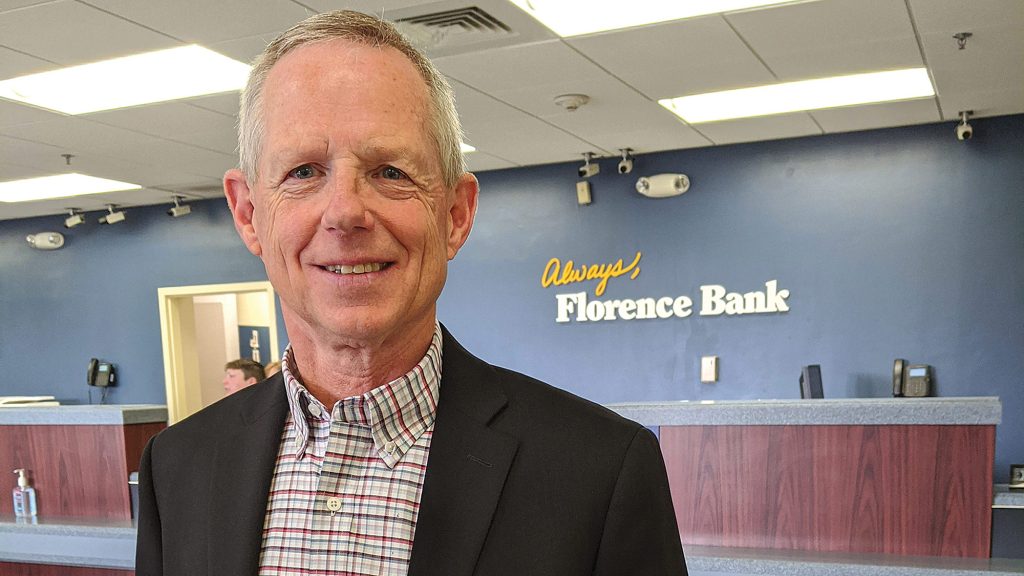
 “We had new requests coming in that we never had before because of agencies that were feeling an impact from a surge of families and individuals needing support because of the pandemic.”
“We had new requests coming in that we never had before because of agencies that were feeling an impact from a surge of families and individuals needing support because of the pandemic.” “During the pandemic, we were thinking creatively about what else can we do that’s different than what we’ve done in the past to support different folks. In some cases, it was really kind of doubling down on our efforts because the needs jumped more than expected.”
“During the pandemic, we were thinking creatively about what else can we do that’s different than what we’ve done in the past to support different folks. In some cases, it was really kind of doubling down on our efforts because the needs jumped more than expected.”
